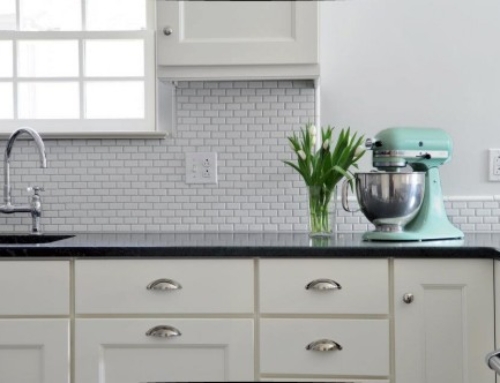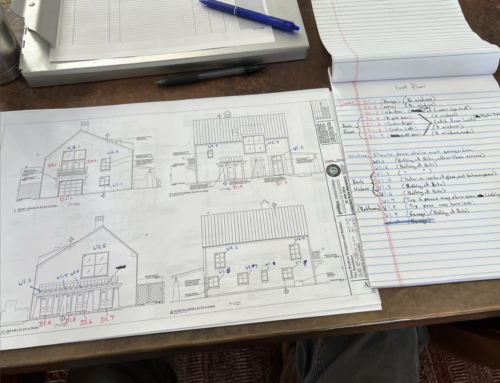In the Beginning: The Starting Point for Every Renovation Project
Yesterday, my neighbor asked me about her kitchen. She explained that she hates the one she has, and she was obviously anxious about getting it renovated. But she was completely confused about how to get started or even identify what sort of renovation she wants. She made the mistake that many people do: jumping right into thoughts about cabinets, layouts and other fixtures. I told her what I tell all of our clients — these items are really just a distraction when you are starting to think about your projects. The features come much later during the design phase.
At our company, we do dozens of renovation projects every year, so understanding where to start is second nature for our team. But that means that we sometimes forget to put ourselves in the shoes of people like my neighbor. She really needs some information to help her figure out how to get started.
Here is a simple breakdown of the first three important steps:
Step 1. Set Your Budget
How much can you comfortably spend? How much should you invest? These are two separate, but inter-related, questions. This is where you should start.
Ask yourself:
- What is my property worth now?
- What will it be worth after I renovate?
Will your property be worth more if you spend the money you feel comfortable spending? And if so, for how long? Will it be a lasting investment? Sometimes, homeowners don’t spend enough, and the result is a project that isn’t a very good value. Conversely, sometimes they want to overspend on things they probably should not.
As an example, when I lived in the city, I bought a simple house for $35,000 in a transitional neighborhood. We renovated the kitchen and chose to not install stone counters because the neighborhood was not very good at the time. We used a nice Formica product instead. Eight years later, when we tried to sell the house now priced at $350,000, everyone shopping for homes had to have granite counters. My house was hard to sell for not having them, so not having “invested” in them during the earlier renovations had been a mistake.
So you can see I was comfortable spending less than I should have. I had “under-invested” in my house. We see this often when folks try to renovate on the cheap. They often get very dated cabinets or color combos. The design of the project doesn’t fit the house or how people need to use the rooms. The finished project does not really elevate the overall value or appeal of the house. When you spend and invest money, you never want this to happen to you.
To find out what features your home should have to set it apart from others in your neighborhood, consult a reputable realtor, Zillow and Remodeling Magazine’s annual “Cost vs Value” report. Note: You should not only get a sense of the overall budget, but also how much you’re willing to spend on appliances. We often ask our customers to choose an appliance package that they’re comfortable with, and then help them build their budget around that.
If you will be using a home equity line of credit to finance the project, you need to speak to your banker to find out how much money you can qualify for, and whether you can afford the monthly payments you’ll be required to make.
Keep in mind, most people do not feel comfortable talking about money or sharing their budget with their contractors, but this is really where the conversation needs to start. A great, trustworthy contractor will help you see what a reasonable budget is and help you stay on budget during construction.
Step 2. Establish Goals for the Project
Now that you understand your budget and what you want to invest, you must identify your goals for the project. Ask yourself:
- What in your home is working for you?
- What’s not working for you?
- How is your home affecting your quality of life?
- What’s working for the house?
- What will make your house even more appealing and valuable, both now and in the future?
If you need help, bring in the fresh eyes of a friend, a design to build general contractor, or your realtor friend.
Next, make a three-column list with columns labeled “must haves,” “would like to haves,” and “sacred cows.” Include answers from everyone who lives in your home. Don’t be afraid to dream a little. Grab magazine clippings or make sketches. Engage in some brainstorming. Dare to think outside the box. After all, you will be spending your money, and you should get what you want. Its OK to not be just like “The Joneses”!
Step 3. Determine What Kind of Remodeling Experience You Want
When I ask folks what kind of remodeling experience they want to have, they always look at me blankly — whether they’re planning major home overhauls or making minor improvements. They seem to think their renovation experience is unrelated to the price or that they have no choice in the matter. They are wrong on both counts.
You need to decide what kind of professional you can work with. Ask yourself:
- Which contractor will plan and manage my project carefully?
- Which will get started and finished as efficiently as possible?
- Who do I want to talk to when a problem comes up or when I am stressed out? (Remodeling, even a small project, is stressful!)
- Who do I want my kids exposed to for the many weeks my project may take?
- Who would I like to have in my house from 7AM until sometimes 7PM, and possibly on weekends, for many weeks?
- Who do I trust to move my personal belongings? Who do I trust with my privacy?
Once you know what you can spend, what you should invest, what your general wishes, dreams and goals are, and what kind of experience you want to have, you can start talking to contractors to see who is a fit for you. Then, team with that professional to get the finished product you want.
Now you notice, I didn’t tell you to shop for cabinet styles, countertop types, or any other fixtures. Remember, those come later.





